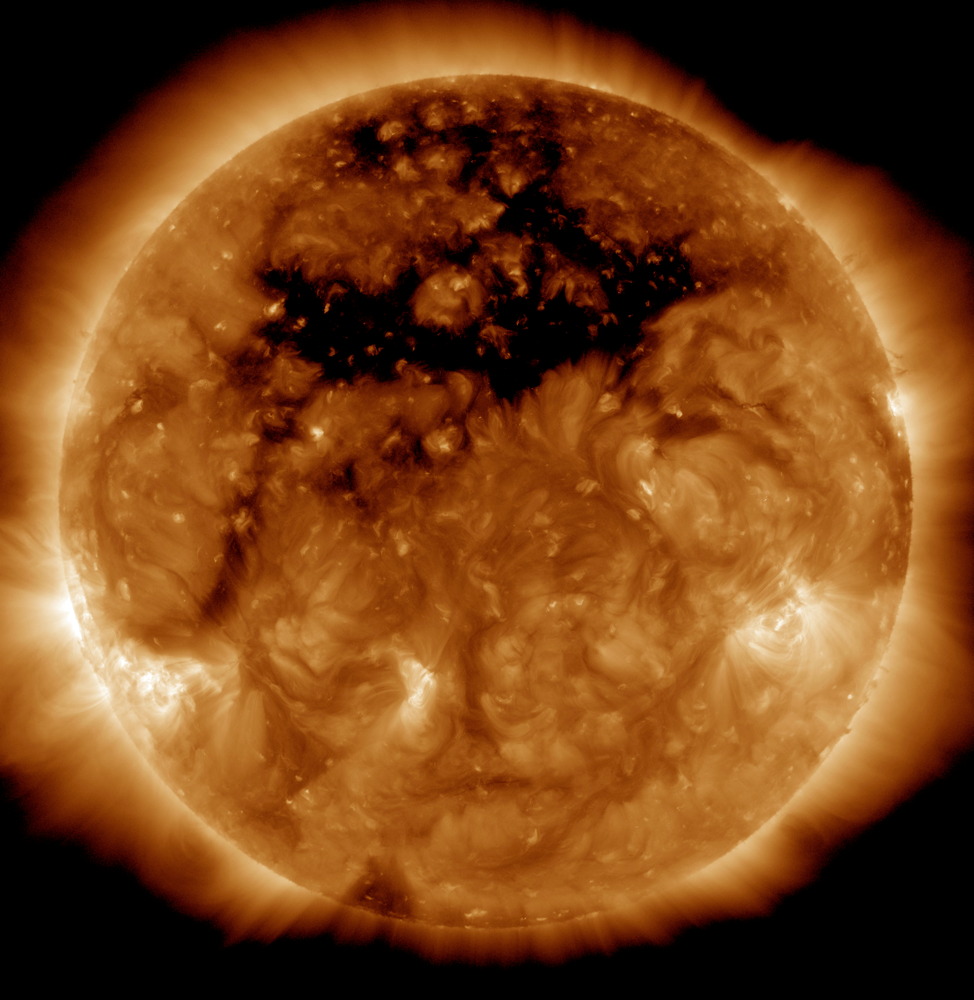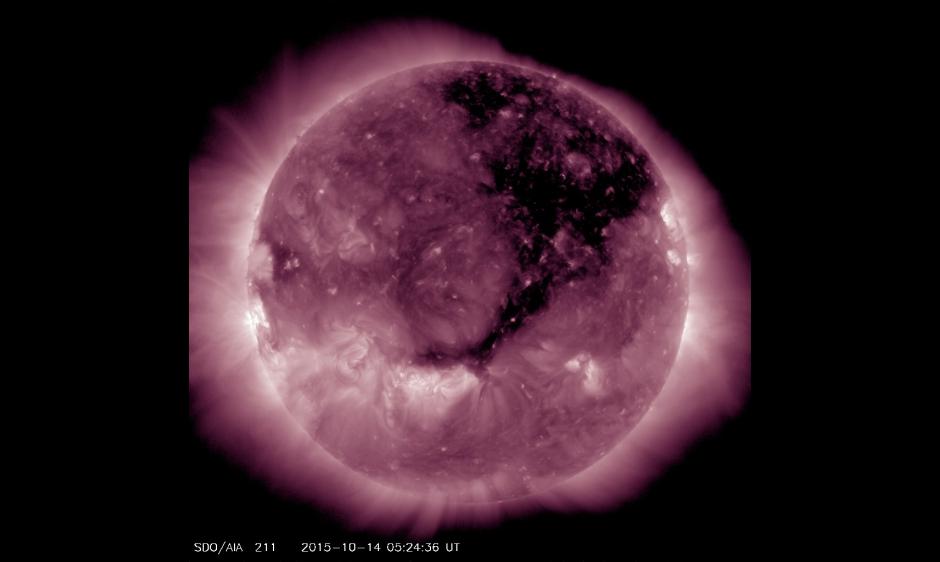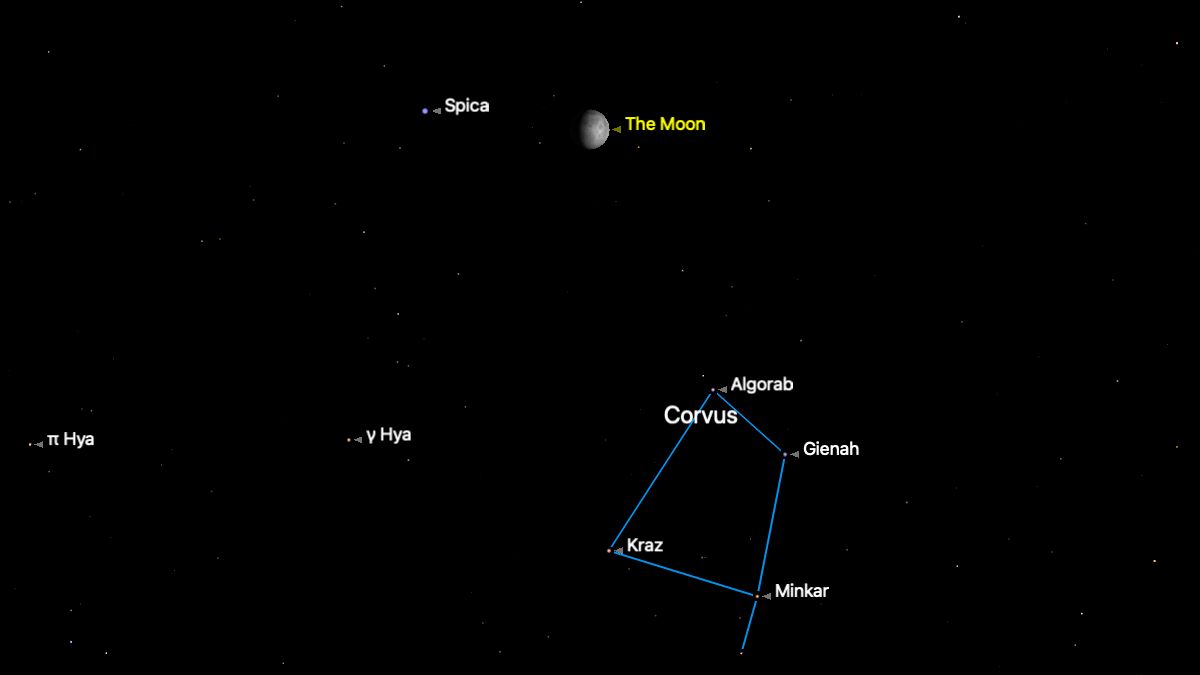Giant 'Hole' in Sun Is 50 Earths Wide

The sun has sprung a leak: A hole in the topmost layer of the sun and its magnetic field, the size of 50 Earths, is letting loose an ultrafast solar wind that has kicked off several nights of auroras down on Earth.
A new image, from NASA's orbiting Solar Dynamics Observatory, reveals the enormous hole as it was Oct. 10, taken at an ultraviolet wavelength unseen by the human eye. To an ordinary observer, the gaping hole would be invisible, though you should NEVER stare at the sun because serious eye damage can result.
The gap in the sun's magnetic field lets out a stream of particles traveling at up to 500 miles (800 kilometers) per second, kindling a days-long geomagnetic storm upon hitting Earth. [Biggest Solar Storms of 2015 in Photos]
Coronal holes, like the one that materialized last week, normally form over the sun's poles and lower latitudes, more often when the sun is at a less active point in its 11-year cycle. They are areas within the sun's outermost layer, called its corona, which are lower-density and cooler — that, plus the weakened magnetic field, lets the plasma and charged particles that make up the corona stream out more easily in a solar wind. If aimed toward Earth, that spells the makings of a geomagnetic storm: a phenomenon that can affect power and navigation for satellites orbiting the Earth as well as radio communication.

Another side effect of a geomagnetic storm is enhanced northern lights: the glowing auroras that often form in the night sky over the northernmost reaches of the planet grow much brighter and can even extend much farther south than usual. (Last week, the National Oceanic and Atmospheric Administration's [NOAA] Space Weather Prediction Center in Boulder, Colorado, initially predicted auroras to be visible as far down as Pennsylvania, Iowa and Oregon, although they didn't ultimately appear quite so low.) Geomagnetic storms and auroras can also be caused by other sun phenomena, such as solar flares and coronal mass ejections, which both blast the corona's material outward because of increased magnetic activity.
As the coronal hole continues its slow march westward on the sun's surface (to the right, from Earth's perspective), solar winds will stay strong, NOAA officials said in a statement, which may lead to additional minor geomagnetic storming. Thus, bright auroras will likely continue — at least around the Arctic Circle.
Email Sarah Lewin at slewin@space.com or follow her @SarahExplains. Follow us @Spacedotcom, Facebook and Google+. Original article on Space.com.
Get the Space.com Newsletter
Breaking space news, the latest updates on rocket launches, skywatching events and more!
Join our Space Forums to keep talking space on the latest missions, night sky and more! And if you have a news tip, correction or comment, let us know at: community@space.com.

Sarah Lewin started writing for Space.com in June of 2015 as a Staff Writer and became Associate Editor in 2019 . Her work has been featured by Scientific American, IEEE Spectrum, Quanta Magazine, Wired, The Scientist, Science Friday and WGBH's Inside NOVA. Sarah has an MA from NYU's Science, Health and Environmental Reporting Program and an AB in mathematics from Brown University. When not writing, reading or thinking about space, Sarah enjoys musical theatre and mathematical papercraft. She is currently Assistant News Editor at Scientific American. You can follow her on Twitter @SarahExplains.
